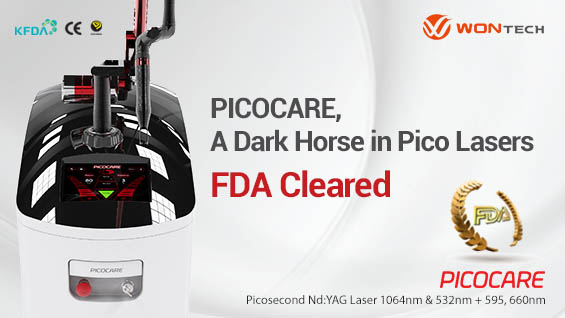.jpg)
With extensive research on botulinum toxin underway, botulinum toxin was recently found to reduce sebum production and improve facial erythema. It can be used in dermatological treatments to alleviate pruritus in intertriginous psoriasis and histamine irritation. It also reduces keloid scarring and prevents hypertrophic scarring when used in suture areas.
Injecting botulinum toxin in the expression muscles and dermis, increases skin elasticity by relaxing the transverse muscle and reduces the effect of expression muscles on the skin surface. This improves fine lines and skin tone by reducing the tension on the skin. Botulinum toxin acts on acetylcholine receptors to shrink pores and provide a lifting effect by weakening muscles that pull the perioral skin downward. It weakens the superficial portion of facial muscles and paralyzes the smooth muscle of dermal lymphatic ducts. This partially prevents lymphatic circulation and causes weak edema, giving the face a youthful plumpness.
In the early days, of botulinum toxin treatment, there was paucity of data on the adequate dosage and techniques in Asians. Therefore, aesthetic physicians had to rely on guidelines established in Caucasians. However, Asians and Caucasians have very different skin condition in terms of thickness and texture as well as the location, thickness and tension of expression muscles. Therefore, it is crucial to understand the correct dosage, injection depth and site in Asians for optimal safety and efficacy.
I advise closely examining the patient’s face prior to treatment. If the patient has an asymmetrical face, you should make the patient be aware of this and make markings as needed. Make sure to have the patient make various facial expressions to ensure the markings are placed correctly.
Diluting botulinum toxin in benzyl alcohol (preservative) containing saline solution has anti-inflammatory and pain-reducing effects. However, this solution is difficult to come by and I generally use the regular saline solution. Sterile water for injection causes severe pain due to osmotic difference and should not be used.
As for the concentration level of botulinum toxin after dilution in saline solution, many studies have reported that it has little impact on the efficacy or duration of the treatment as long as the absolute amount of diluted toxin is the same.
[Advertisement] PICOCARE - Manufacturer: WONTECH(www.wtlaser.com)
The efficacy and duration vary depending on the amount of botulinum toxin used. The duration of the effects improves with repeated treatments and additional treatments should be determined based on the patient’s response. Therefore they do not need to be scheduled at a consistent interval.
Side effects and complications include injection site pain, tenderness, discomfort, bruising, and headache, etc. Excessive compensation from surrounding tissues can also cause samurai-like eyebrows, angular jawline, and compensatory hypertrophy of calf muscle. Botulinum toxin seeping into surrounding muscles can cause more serious side effects such as drooping eyebrows, ptosis, unnatural facial expressions and mouth movements. Serious side effects include hollowed cheek, asymmetric mouth, drooling, dysphagia, breathing difficulty, and neck muscle weakness. There were reports of hypersensitive reactions such as hives and dyspnea but they are rare and no clear causality with botulinum toxin was confirmed.
Recently, there were reports of secondary tolerance due to neutralizing antibodies of protein in botulinum toxin and iatrogenic botulism caused by botulinum toxin seeping into the blood stream in large dose injections. Secondary tolerance to botulinum toxin is caused by antibodies, an immune response triggered by proteins in the botulinum toxin.
It is known that rather than aesthetic treatment, long-term, high-concentration exposure to botulinum toxin for treatment of muscle spasm triggers antibodies. It is reported that injection of hundreds of units every few months for treatment of cervical dystonia can lead to 5-10% antibody development.
However, there were also reports of secondary tolerance to botulinum toxin in aesthetic treatments. In Europe, the risk of tolerance was examined between long-term use of Dysport in rehabilitation and aesthetic treatments. In 303 wryneck patients given at least 6 Dysport treatment over at least 3 years, 2% of patients developed antibodies. The risk was 0.2% among patients given repeated low-dose aesthetic treatments.
Proteins in commercial botulinum toxin products that cause secondary resistance are as follows:
-To be continued




















